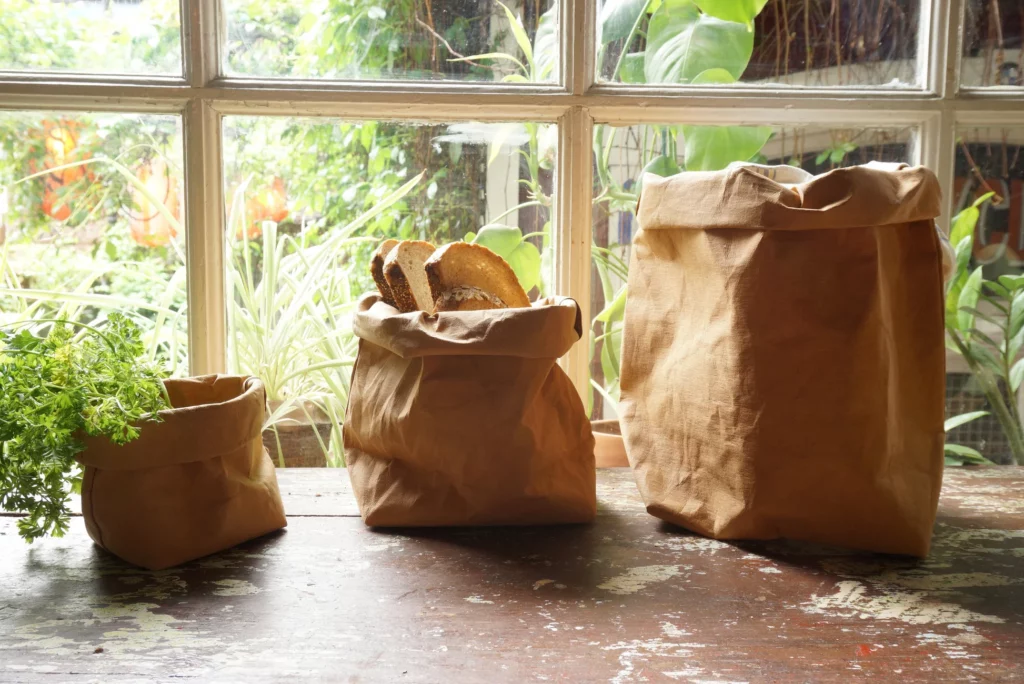Introduction
In today’s environmentally conscious world, businesses and consumers alike are re-examining the environmental impact of packaging materials. Woven bags, paper bags, and jute bags are popular choices across various industries for packaging bulk goods, groceries, and agricultural products. But how do these options compare when it comes to their carbon footprints? Which is truly the greener choice?
In this blog, we break down the data and lifecycle analysis to explore the carbon emissions associated with woven polypropylene bags, paper bags, and jute bags, helping you make a more informed sustainable decision.
What Is Carbon Footprint and Why It Matters
A carbon footprint quantifies the total amount of greenhouse gases (GHGs), primarily carbon dioxide (CO2), that are directly and indirectly released into the atmosphere over the entire lifecycle of a product. This includes every stage—from the extraction of raw materials, through the manufacturing and processing phases, to transportation, usage by consumers, and finally, disposal or recycling. Each step consumes energy and resources, often relying on fossil fuels, which emit CO2 and other greenhouse gases that contribute to global warming.
Measuring a product’s carbon footprint provides a comprehensive view of its environmental impact by capturing all these emissions, rather than focusing on just one phase. This is especially important for packaging materials, which are ubiquitous across industries and have a significant environmental footprint. Packaging not only requires energy-intensive manufacturing processes but also involves transportation emissions due to its weight and volume, and its disposal can lead to waste accumulation or pollution if not managed properly.
Understanding and reducing the carbon footprint of packaging is therefore critical for mitigating climate change. By choosing materials and practices that lower greenhouse gas emissions throughout the lifecycle, companies and consumers can play an essential role in reducing overall environmental degradation and moving toward more sustainable consumption patterns.
Woven Bags: Durable and Lightweight but Petroleum-Based
Material and Production
Woven bags are typically made from polypropylene (PP), a type of plastic derived from fossil fuels. The manufacturing process involves polymerization and extrusion, which require significant energy input.
Carbon Emissions Data
- Production of polypropylene resins emits around 1.6 to 3.0 kg CO2 per kg of plastic produced.
- Woven bags are lightweight yet extremely durable, which means less material is used per bag compared to other options.
- Their strength allows for multiple reuse cycles, reducing the need for single-use bags.
End of Life
- Woven bags are not biodegradable but are recyclable in facilities that accept polypropylene.
- Improper disposal can lead to environmental pollution, but recycling significantly reduces their carbon footprint.
Summary
Despite being petroleum-based, woven bags’ low weight and high durability can lead to a relatively low carbon footprint per use—especially when reused multiple times.
Paper Bags: Renewable But Resource-Intensive

Material and Production
Paper bags are made from wood pulp, a renewable resource. However, the pulping and papermaking processes are energy- and water-intensive, often involving chemical treatments.
Carbon Emissions Data
- Producing 1 kg of paper emits approximately 2.0 to 6.0 kg CO2, depending on the source and process efficiency.
- Paper bags are heavier than woven bags, increasing transportation emissions.
- Their tendency to be single-use raises overall environmental impact.
End of Life
- Paper bags are biodegradable and compostable, which reduces environmental pollution.
- However, if paper bags are recycled, the process can still be energy-intensive.
Summary
Paper bags have a renewable source and biodegradability benefits but tend to have a higher carbon footprint per bag due to heavier weight and production energy costs, especially if used only once.
Jute Bags: Natural and Biodegradable, But Resource and Land Intensive
Material and Production
Jute is a natural fiber harvested from plants, making jute bags biodegradable and compostable. The production process is generally less energy-intensive than plastic and paper but involves agricultural inputs.
Carbon Emissions Data
- Jute cultivation can sequester CO2, potentially offsetting some emissions.
- However, growing jute requires land, water, and fertilizers, contributing to indirect emissions.
- Jute bags tend to be heavier and bulkier, impacting transportation emissions.
End of Life
- Jute bags decompose naturally, posing minimal environmental hazards.
- Their durability allows for multiple reuse cycles.
Summary
Jute bags offer strong environmental advantages in biodegradability and carbon sequestration, but their agricultural footprint and heavier weight can increase emissions relative to woven bags.
Comparative Lifecycle Analysis
| Aspect | Woven Polypropylene Bags | Paper Bags | Jute Bags |
|---|---|---|---|
| Raw Material Source | Fossil fuel (non-renewable) | Wood pulp (renewable) | Plant fiber (renewable) |
| Carbon Emissions (kg CO2/kg) | ~1.6 to 3.0 | ~2.0 to 6.0 | Variable; includes sequestration |
| Weight | Lightweight | Heavier | Heaviest |
| Reusability | High | Low | High |
| End of Life | Recyclable, not biodegradable | Biodegradable, compostable | Biodegradable, compostable |
| Transportation Impact | Low due to light weight | Higher due to weight | Highest due to weight |
Which Bag Has the Lowest Carbon Footprint?
The answer depends largely on use patterns:
- Single-use Scenario: Jute bags may have a lower carbon footprint because they are biodegradable and have some carbon sequestration potential, but their heavier weight means transportation emissions are higher.
- Multiple Reuse Scenario: Woven polypropylene bags typically offer the lowest carbon footprint per use due to their durability and light weight. If reused several times and properly recycled, they become very sustainable.
- Paper Bags often have a higher carbon footprint due to heavier weight and energy-intensive production, especially if not reused.
Also Read: Why Woven Polypropylene Bags Are Ideal for Bulk Packaging
Additional Environmental Considerations
- Waste Management Infrastructure: The environmental impact also depends on the availability of recycling and composting facilities in your area.
- Microplastics: Woven bags can contribute to microplastic pollution if not disposed of properly.
- Water Usage: Paper and jute production generally require more water than plastic bag manufacturing.
- End Consumer Behavior: Reuse and proper disposal habits dramatically affect the carbon footprint and environmental impact.
Conclusion
Choosing the most sustainable bag is complex and depends on your specific use case, local infrastructure, and consumer behavior. However, current data suggest:
- For durability and reuse, woven polypropylene bags are a low-carbon choice.
- For biodegradability, jute bags are preferable, provided their heavier weight is managed.
- Paper bags provide a middle ground but may have a higher carbon footprint if used once.
The key to minimizing environmental impact lies in maximizing reuse and ensuring proper disposal or recycling—no matter the bag material.
